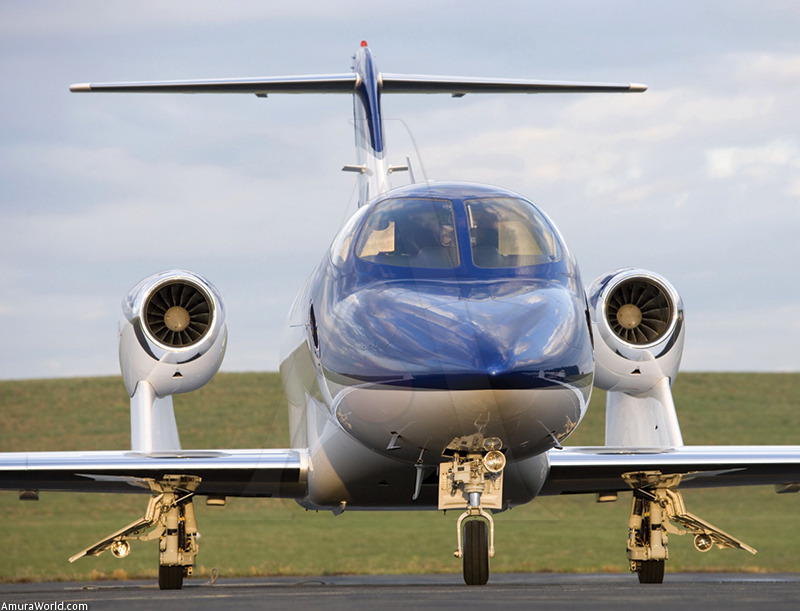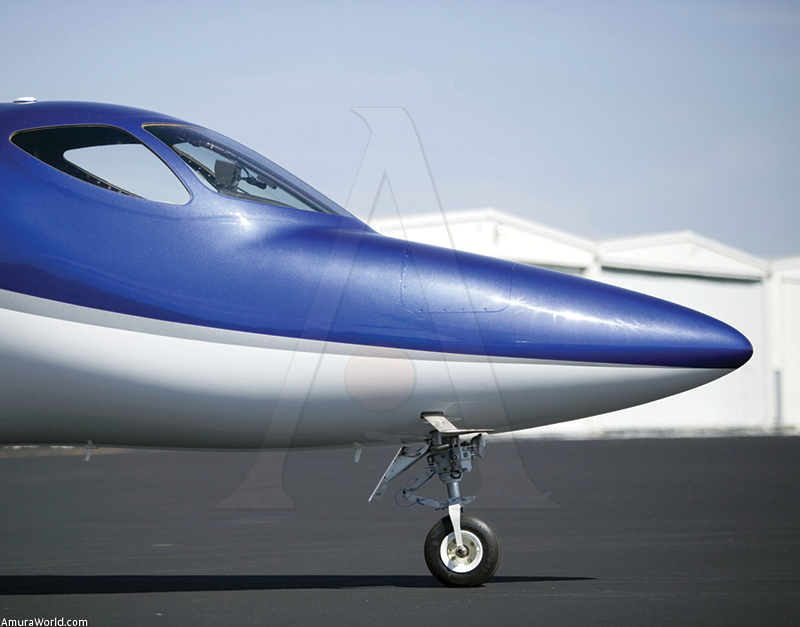The Power Dreams HondaJet
We always had wings... and now we can fly.” That’s how the advertising of the Japanese firm Honda Motor Co. reads for the launch of the HondaJet, its very light jet, with which it will enter the business jets market within three or four years.
The model will be officially launched during the annual meeting of the Experimental Aircraft Association (EAA) AirVenture 2006 in Oshkosh, Wisconsin, USA, which will be the culmination of a research process of more than 20 years in which the manufacturer tested using other manufactur- ers’ engines in the development of its own engine, the HF118, which is why the advertising for the model reads “The Power of Dreams”. A recognition of its proof.
The first test flights were made in December 2003 at Piedmont Triad Airport in Greensboro, USA and now Honda will continue with the process of obtaining the FAA certification within three or four years.
Manufactured to a stylized design, the main characteristic of the model that can fly at 775 kilo- meters per hour at a height of 12,500 meters with a range of 2,000 kilometers is the position of its engines on top of the wings, which, according to the manufacturer, is a configuration that reduces wind resistance during the climb to higher alti- tudes, as well as improving the efficiency and per- formance of the aircraft.
At the launch of the first model, which stands out in its blue and white colors, the Japanese man- ufacturer, who had first entered into an alliance with Piper Aircraft, Inc. for sales and service in the USA, ensured that, unlike conventional jets, the model will offer better fuel efficiency and improved cabin space, which will benefit from the new design that eliminates the need for mounting structures on the fuselage, which will give 30% more interior space for the passengers, which may be six or seven, depending on the crew.
Latest Generation
Using the latest generation materials, the fuse lage is built with a light and compact honeycomb structure from compound carbon.
The wings are assembled using aluminum panels on a single sheet plate that results in a smoother surface than conventional configurations. The section of the Honda SMH-1 laminar flow wing provides long wind resistance, better performance at high speeds thanks to its relative weights, as well as a significant improvement in the aircraft’s aerodynamic performance.
Other technological aspect used to reduce the wind resistance of the fuselage is the nose, which is designed to generate laminar flow. These char- acteristics, in combination with the HFl 18 engine, give the aircraft a total efficiency of 40% more than conventional aircraft.
In the cabin, the pilots are provided with the latest in avionics, including an information sys- tem visualized through a flat screen above the windshield, as well as automatic pilot, anti-icing equipment and other systems. The model will con- tinue to be tested until it has accumulated 200 hours in order to verify the correct operation and performance of each of its systems.
The End of a Dream
“Aviation has been a dream for Honda for a long time and the HondaJet is the realization of such a dream’’, commented Michimasa Fujino, the HondaJet chief engineer and vice-president of Honda R&D Americas, Inc. “We chose EAA Air Venture for the world debut of the HondaJet with the true spirit of our passion for aviation and to share our new technology with the aviation community from a research and develop- ment point of view.”
Technical Data
From the Far East
Provisional name
HondaJet
Passengers
7 (2 pilots+5 passengers 1+6)
Engines
2, GE-Honda HF118 Turbofan
Length
41.7 ft
Width
39.9 ft
Height
13.2 ft
Speed
420 knots
Ceiling
41,000 ft
Range
1,100 nm
Maximum take-off thrust
1,670 lb x 2
Maximum take-off weight
9,200 lb
Fuel consumption
0.8 nm/lb
Take-off distance
2,647 ft
Landing distance
2,277 ft
FAA Certification
2009/2010
Text: Laura Velázquez ± Photo: Cortesía Honda






